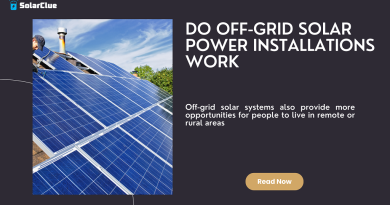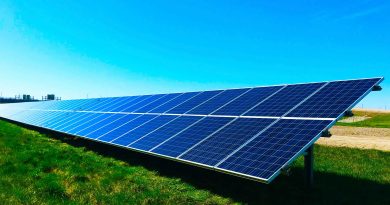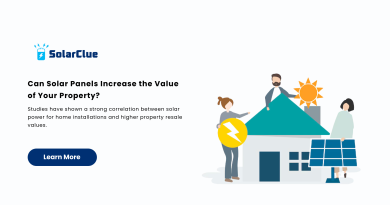What Is The Highest Wattage Solar Panel Available?
Solar panels have become increasingly efficient and powerful, with some panels now capable of producing extremely high wattage. Understanding the factors that influence panel wattage, such as technology, size, and efficiency, is crucial for selecting the right solar panel for your needs. This guide will explore the concept of solar panel wattage, compare different types of panels, and discuss the impact of panel size and efficiency on achieving maximum wattage.
Table of Contents
- 1 The Concept of Solar Panel Wattage and Its Significance
- 2 Factors Affecting Solar Panel Wattage (Technology, Size, Efficiency)
- 3 Comparing Different Solar Panel Types in Terms of Wattage
- 4 The Impact of Panel Size on Wattage
- 5 The Role of Solar Cell Technology in Achieving High Wattage
- 6 The Future of Solar Panel Wattage and Efficiency
- 7 The Impact of High-Wattage Panels on System Design and Cost
- 8 Case Studies of High-Wattage Solar Panels in Use
- 9 The Benefits and Drawbacks of High-Wattage Panels
- 10 Comparison of Solar Panel Types and Wattage
- 11 Conclusion
- 12 FAQ Section
The Concept of Solar Panel Wattage and Its Significance
What Is Solar Panel Wattage?
- Definition: Wattage refers to the amount of electricity a solar panel can produce under standard test conditions (STC), typically measured in watts (W).
- Significance: Higher wattage panels produce more electricity, which can be especially beneficial in systems with limited roof space or for those looking to maximize energy output.
Why Wattage Matters
- Energy Production: Higher wattage panels can generate more electricity, reducing the number of panels needed for a given energy requirement.
- Cost-Effectiveness: Higher wattage panels can potentially reduce installation costs by minimizing the amount of hardware and labor needed.
Factors Affecting Solar Panel Wattage (Technology, Size, Efficiency)
1. Technology
- Monocrystalline Panels: Known for high efficiency and high wattage, monocrystalline panels are made from single-crystal silicon, which allows for more efficient electron flow.
- Polycrystalline Panels: Made from multiple silicon crystals, these panels are typically less efficient and have lower wattage compared to monocrystalline panels.
- Thin-Film Panels: These panels are made by depositing thin layers of photovoltaic material on a substrate. They are generally less efficient and have lower wattage but are flexible and lightweight.
2. Size
- Larger Panels: Generally, larger panels can house more solar cells, leading to higher wattage. However, they require more space and may not be suitable for all installations.
- Smaller Panels: While more compact, smaller panels usually have lower wattage, but they can be useful in tight spaces or for small-scale applications.
3. Efficiency
- High-Efficiency Panels: Panels with higher efficiency can produce more power per square meter, leading to higher wattage. Advances in technology, such as PERC (Passivated Emitter and Rear Cell) and bifacial panels, contribute to higher efficiency.
- Standard Efficiency Panels: These panels have lower efficiency and wattage, making them less suitable for space-constrained installations.
Comparing Different Solar Panel Types in Terms of Wattage
1. Monocrystalline Solar Panels
- Wattage Range: Typically between 300W to 500W or more.
- Advantages: High efficiency, high wattage, long lifespan, and better performance in low-light conditions.
- Disadvantages: Higher cost compared to other types.
2. Polycrystalline Solar Panels
- Wattage Range: Typically between 250W to 400W.
- Advantages: Lower cost, good performance, and widespread availability.
- Disadvantages: Lower efficiency and wattage compared to monocrystalline panels.
3. Thin-Film Solar Panels
- Wattage Range: Typically between 100W to 300W.
- Advantages: Lightweight, flexible, and less affected by shading.
- Disadvantages: Lower efficiency and wattage, larger area required for the same power output as crystalline panels.
The Impact of Panel Size on Wattage
1. Larger Panels
- Higher Wattage: Larger panels can accommodate more solar cells, leading to higher wattage.
- Space Requirements: These panels require more roof space, making them less suitable for small roofs or areas with space constraints.
2. Smaller Panels
- Lower Wattage: Smaller panels have fewer cells, resulting in lower wattage.
- Flexibility: They are ideal for installations where space is limited or where the panels need to be distributed over multiple roof areas.
The Role of Solar Cell Technology in Achieving High Wattage
1. PERC Technology
- Enhanced Efficiency: PERC cells add an extra layer to the back of the cell, reflecting sunlight that passes through, which increases the panel’s efficiency and wattage.
- High Wattage: Panels using PERC technology can achieve higher wattages, typically in the range of 350W to 500W.
2. Bifacial Solar Panels
- Dual-Sided Power Generation: Bifacial panels can generate power from both sides, increasing overall energy production and wattage.
- High Wattage Potential: These panels can achieve wattages exceeding 500W, especially in optimal conditions.
The Future of Solar Panel Wattage and Efficiency
1. Emerging Technologies
- Perovskite Solar Cells: These cells have the potential to significantly increase efficiency and wattage while being cheaper to produce.
- Multi-Junction Solar Cells: By combining different materials, these cells can capture more of the solar spectrum, leading to extremely high efficiencies and wattages.
2. Higher Wattage Panels
- Increasing Demand: As demand for higher energy production grows, manufacturers are focusing on developing panels with wattages exceeding 500W, which are becoming more common in the market.
The Impact of High-Wattage Panels on System Design and Cost
1. System Design
- Fewer Panels Required: High-wattage panels reduce the number of panels needed for a given energy output, simplifying system design and potentially reducing installation costs.
- Inverter Compatibility: Higher wattage panels may require inverters with higher input capacities, which could increase overall system costs.
2. Cost Considerations
- Initial Investment: High-wattage panels are typically more expensive upfront, but their ability to generate more power can lead to greater long-term savings.
- ROI: The reduced need for additional panels and equipment can shorten the return on investment period.
Case Studies of High-Wattage Solar Panels in Use
1. Utility-Scale Solar Farms
- Example: A solar farm in Nevada uses 500W monocrystalline panels to maximize energy production with minimal land use.
- Outcome: The use of high-wattage panels has allowed the farm to produce enough electricity to power thousands of homes while keeping installation costs relatively low.
2. Commercial Rooftop Installations
- Example: A large warehouse in California installed 450W bifacial panels to take advantage of both direct and reflected sunlight.
- Outcome: The high-wattage panels have significantly reduced the building’s energy costs, providing a quicker return on investment.
The Benefits and Drawbacks of High-Wattage Panels
Benefits
- Higher Energy Production: High-wattage panels generate more electricity, making them ideal for maximizing energy production in limited space.
- Fewer Panels Needed: Reducing the number of panels required for a given energy output simplifies installation and reduces hardware costs.
Drawbacks
- Higher Initial Cost: These panels are more expensive upfront, which can be a barrier for some buyers.
- Inverter and System Compatibility: High-wattage panels may require more expensive inverters and other system components, increasing overall system costs.
Comparison of Solar Panel Types and Wattage
| Solar Panel Type | Typical Wattage Range | Efficiency | Advantages | Disadvantages |
|---|---|---|---|---|
| Monocrystalline | 300W – 500W+ | High (18-22%) | High efficiency, long lifespan, good low-light performance | Higher cost |
| Polycrystalline | 250W – 400W | Medium (15-17%) | Lower cost, widely available | Lower efficiency, larger area required |
| Thin-Film (e.g., CdTe) | 100W – 300W | Low (10-12%) | Lightweight, flexible, less affected by shading | Lower efficiency, larger area required |
| PERC (Monocrystalline) | 350W – 500W+ | High (20-23%) | Enhanced efficiency, higher wattage | Higher cost |
| Bifacial | 400W – 500W+ | High (19-24%) | Generates power from both sides, high wattage | Requires reflective surface, higher cost |
Conclusion
Understanding the highest wattage solar panels available is essential for anyone looking to maximize their solar energy production. By considering factors like panel technology, size, and efficiency, you can choose the right solar panels to meet your energy needs. High-wattage panels offer significant benefits, including greater energy output and fewer panels needed, but they also come with higher upfront costs and require careful system design. As solar technology continues to advance, we can expect to see even more powerful and efficient panels on the market, offering exciting possibilities for both residential and commercial solar energy systems.
FAQ Section
1. What is the highest wattage solar panel available?
As of now, some high-efficiency monocrystalline and bifacial panels can achieve wattages exceeding 500W, with new technologies pushing these limits even further.
2. How does panel size affect wattage?
Generally, larger panels can house more solar cells, leading to higher wattage. However, efficiency also plays a crucial role; smaller panels with higher efficiency can match or exceed the wattage of larger, less efficient panels.
3. Is it better to choose high-wattage panels for my home?
High-wattage panels are ideal if you have limited roof space or want to maximize energy production. However, they come at a higher upfront cost, so it’s important to weigh the long-term savings against the initial investment.
4. How do I determine the right wattage for my solar panel system?
The right wattage depends on your energy consumption, available roof space, budget, and location. A professional solar installer can help assess your needs and recommend the optimal system size and wattage.
5. Are high-wattage solar panels more efficient?
Not necessarily. Wattage refers to the total power output, while efficiency measures how well the panel converts sunlight into electricity. Some high-wattage panels are also highly efficient, but others achieve high wattage through larger size rather than increased efficiency.



